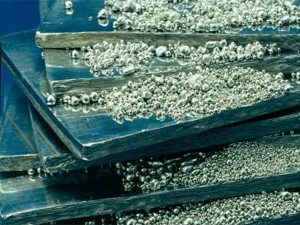
[miningmx.com] – ANGLO American Platinum (Amplats) said it had grossed at least $100m more in sales in the first half of 2014 by marketing its own platinum and added that it was mulling plans to establish its own marketing organisation.
In a presentation to analysts earlier this month, Andrew Hinkly, executive head of marketing at Amplats, said the company had removed discounts that had existed in platinum supply contracts negotiated by Johnson Matthey. Amplats decided not to renew its marketing agreement with Johnson Matthey last year.
“In H1 2014 [first half of Amplats’ financial year] the gross profit margin is 1.9 percentage points higher as a result of eliminating discounts and commissions when compared with the $100m paid in discounts and commissions in 2011,’ said Hinkly.
Reuters reported last month that Amplats was struggling to make its own way in its marketing efforts.
“The problem is that Johnson Matthey were not simply a conduit or a go-between, but they would provide some level of quasi-banking arrangements in terms of stock holdings for example,’ said Ross Norman, CEO of bullion broker, Sharps Pixley, in the Reuters article.
Kieran Daly, an analyst with Macquarie Research, said that in a recent presentation delivered by Amplats to analysts, the company was keen to prove it had a grasp of the complexity of the platinum marketing industry.
“Amplats believes the industry in general, and the company in particular, can influence demand and thereby keep market positions tight and potentially impact prices positively,’ he said.
Hinkly also said the company was targeting increased jewellery sales in places like China and India where there was less price elasticity while the industry was looking at establishing its own marketing body that would perform a function currently carried out by Platinum Guild International which popularises the platinum jewellery at a retail level and conducts research.
The improved marketing efforts is part of a broader strategy to support the viability of growing production to 2.7 million oz to 2.8 million oz/year, an increase that could involve expenditure of some R50bn, described by Daly as “… that growth talk again’.
“Notwithstanding that Amplats has concluded that the market is not experiencing a cyclical decline in profitability, but rather structural changes in the industry are affecting demand/supply, the company has said that (yet another) review of its various assets is underway and they believe a likely outcome could be a production profile of 2.7-2.8m oz of platinum per annum in ten years time,’ Daly said.
Amplats, however, believes this strategy is not a reboot of its earlier “growth at any cost’ approach, but rather one of value over volume.
The expansion planned at Mogalakwena, for instance, in which output would be increased to 420,000 oz/year by 2018, was more efficient production than the mines at Rustenburg owing to less chrome in the concentrate from the Platreef orebody it mines.
The value per platinum equivalent ounce for Mogalakwena was about 50% greater than the Rustenburg mines with Mogalakwena booking operating free cash flow of over R10bn in the last five-and-a-half years.
“With increased costs and risk, the Mogalakwena de-bottlenecking is one of the few sensible platinum growth projects,’ said Hanre Rossouw, a fund manager for Investec Asset Management.
“Sadly, for the employment levels in the South African mining sector, the industry is moving away from deep-level, labour-intensive mining to open cut operations more suitable to mechanisation,’ he said.
After spending tens of billions of rands, Amplats today produces 2.3 million oz. Since 2013, it has also embarked on a programme of restructuring and optimisation. Its five mines in the Rustenburg region, for instance, have been merged to three and will be sold off or separately listed in 2015 or 2016.
The culprit in all of this was the global economic crisis in 2007 which saw demand for platinum, which is used in the manufacture of autocatalysts in automobiles, flatten.
Whereas the price of platinum averaged an 8% increase since 1997, it now tapered off and more recently plummeted falling to a five-year low of below $1,200/oz.
However, costs have increased 14% since 2000, according to the Amplats presentation. Labour became much more expensive as did fuel and, of course, electricity.








